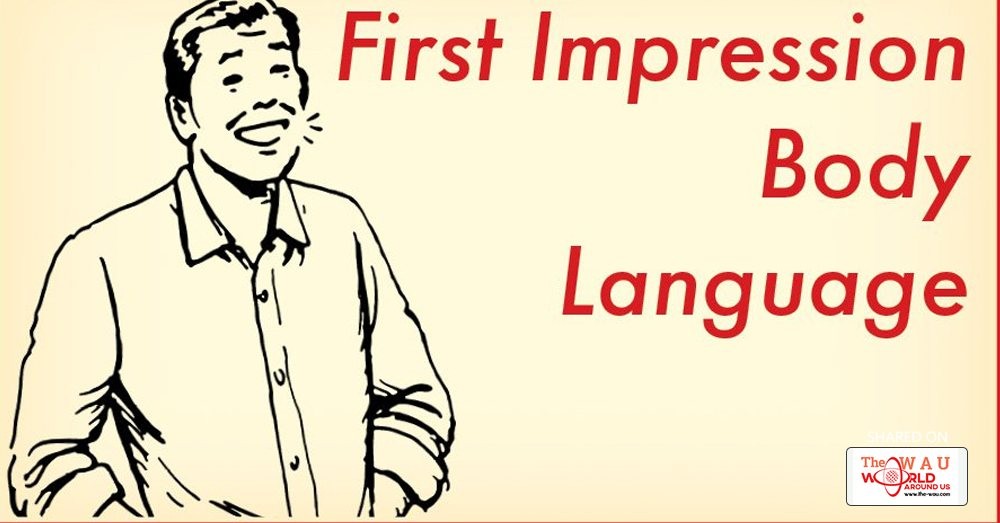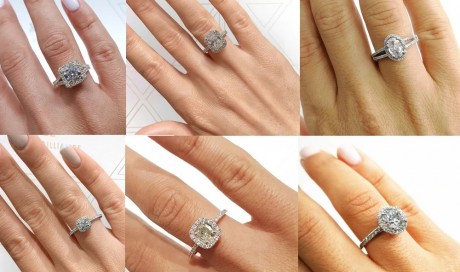How amazingly quickly other people form one of you, and how difficult it is to overcome that initial assessment.
We also explained how first impressions aren’t about trying to be someone you’re not, but getting your conversational strategies and body language to match and enhance your true feelings, values, and personality. Sometimes we act in ways that contradict how we really feel, and create barriers to people accessing our best qualities. Improving your first impression clears these obstacles, increasing the chances that new acquaintances will be able to connect with you and better get to know who you really are. Nailing the “mechanics” of a good first impression gives you the assurance that its outcome — good or bad — will be based on actual compatibility, rather than a misfiring of external cues.
There are two components to creating a positive first impression: what you say (conversation) and how you act (body language). Both components are important (you can read more about the art of conversation here), but the latter is actually much more influential.
Nonverbal cues have 4X the impact on your impression than your words do. Thus, how you stand, sit, gesture, and generally hold yourself can either significantly enhance or detract from the overall first impression you make on others.
In order to make your body language a first impression booster, you want it to communicate 3 main things: openness, confidence, and interest.
Body Language That Communicates Openness
Have you ever needed to ask someone to take a picture for you, or looked around the room at a party trying to decide who to talk to? How did you pick? You may not have realized it, but you likely chose someone who looked “open” rather than “closed.” There was something about their facial expression, gaze, posture, and the way they talked and interacted with others that seemed warm, safe, and approachable rather than threatening, hostile, aloof, and/or self-contained.
How do you achieve such a welcoming aura yourself, so that people want to make contact in the first place, and can feel a sense of connection with you once they do?
It’s primarily about opening up what body language expert Patti Wood calls your “body windows.”
Body windows are parts of the body that influence others to see you as more open or closed, all depending on how you orient them. These are places that feel intimate and/or are vulnerable to physical attack. When you “expose” them to others, therefore, the more primal part of people’s brains reads you as more accessible and approachable.
Wood compares someone who keeps these body parts “closed” to a house with boarded up windows — the effect is bleak, creepy, confined, and off-putting; you certainly don’t want to go in. A house with open windows, in contrast, feels fresh, welcoming, and inviting.
Let’s take a look at each “window” and how you can either close or open it:
Heart. The heart is the metaphorical seat of feelings like love and warmth, as well as values like honesty. It’s not surprising then that having a frank, emotionally intense conversation is known as having a “heart to heart.”
People will feel more connected to you, and open up more, if you face them straight on — literally heart to heart. You come off as more trustworthy when you’re dealing with them “straight.” Even a quarter turn away from someone can make the interaction feel less intimate.
Eyes. Eyes are famously said to be the windows to the soul. So don’t always have their shades drawn by staring at your feet, or at your phone. Don’t wear sunglasses unless you really need them. And try not to blink excessively.
Look around with an open gaze, and don’t be afraid to make warm, friendly eye contact with other people. Eye contact very often serves as an invitation for someone to approach.
Throat. Baring the throat makes one vulnerable to attack. When you’re wearing a button-up shirt and tie, which doubly covers your neck, you convey a closed-off, protected authority, which can be helpful in the competitive world of business. But in a social setting, an open neck reads as warm and welcoming.
So in your off hours, remove your tie, and unbutton your shirt a little. Or wear a v-neck tee, which not only reveals your neck, but offers a little more access to your heart as well. Not too deep mind you; a few inches from your collarbone will do.
This is perhaps why turtlenecks don’t make a great impression. Well, also, because, turtlenecks.
Mouth. A frown registers instantly in the primal parts of the brain as a potential threat. A smile signifies an invitation. It bespeaks friendliness, warmth, and openness. And when you smile at someone, they feel as though you find them appealing.
Stomach. One of the most common things to do with your arms is to cross them across your stomach. But this stance reads as defensive and puts a barrier between you and others that makes you seem more distant and aloof. Research actually bears this perception out; when a group of participants were asked to listen to a lecture while keeping their arms crossed, they felt more negatively towards the speaker and reported higher levels of stress than the control group. So to not only feel less stressed yourself, but to also convey more openness to others, sit and stand with arms by your sides rather than crossed over your stomach, even if it feels a little awkward.
Hands. Specifically your palms. For whatever reason, it’s hard to lie while showing your palms. Dishonest people will ball them into fists, hide them in pockets, tuck them under the table, or secrete them behind their back. Conversely, showing open palms to others conveys honesty, trustworthiness, and openness. So leave your hands at your sides and to the front, and make plenty of gestures with an open palm.
Feet. Wood calls the feet “the most honest windows” of the body. Though we can often consciously control other parts of our body, especially our upper half, she explains, our true feelings tend to “‘leak out’ through the feet.” One of these “tells” is what she calls the “foot lock,” where “one foot wraps around the leg, usually at the lower calf.” This bit of body language, Wood says, “is like having a ‘closed’ sign hanging on the door.”
In addition to opening up each of your “body windows,” you should also be mindful of clearing away any objects between you and another person. So don’t hold a beverage up to your chest while you’re standing at a party, and when you’re sitting face-to-face with someone at a restaurant or coffee shop, don’t put your drink, laptop, backpack, phone, etc. on the table between you. In fact, don’t put your phone on the table at all. Research shows that its mere presence — even if you’re not looking at it — leads people to keep their conversation more superficial; they subconsciously feel they may be interrupted at any time, and so refrain from going deeper.
All in all, you want your body windows open, and the channel for connection clear.
...[ Continue to next page ]
Share This Post















